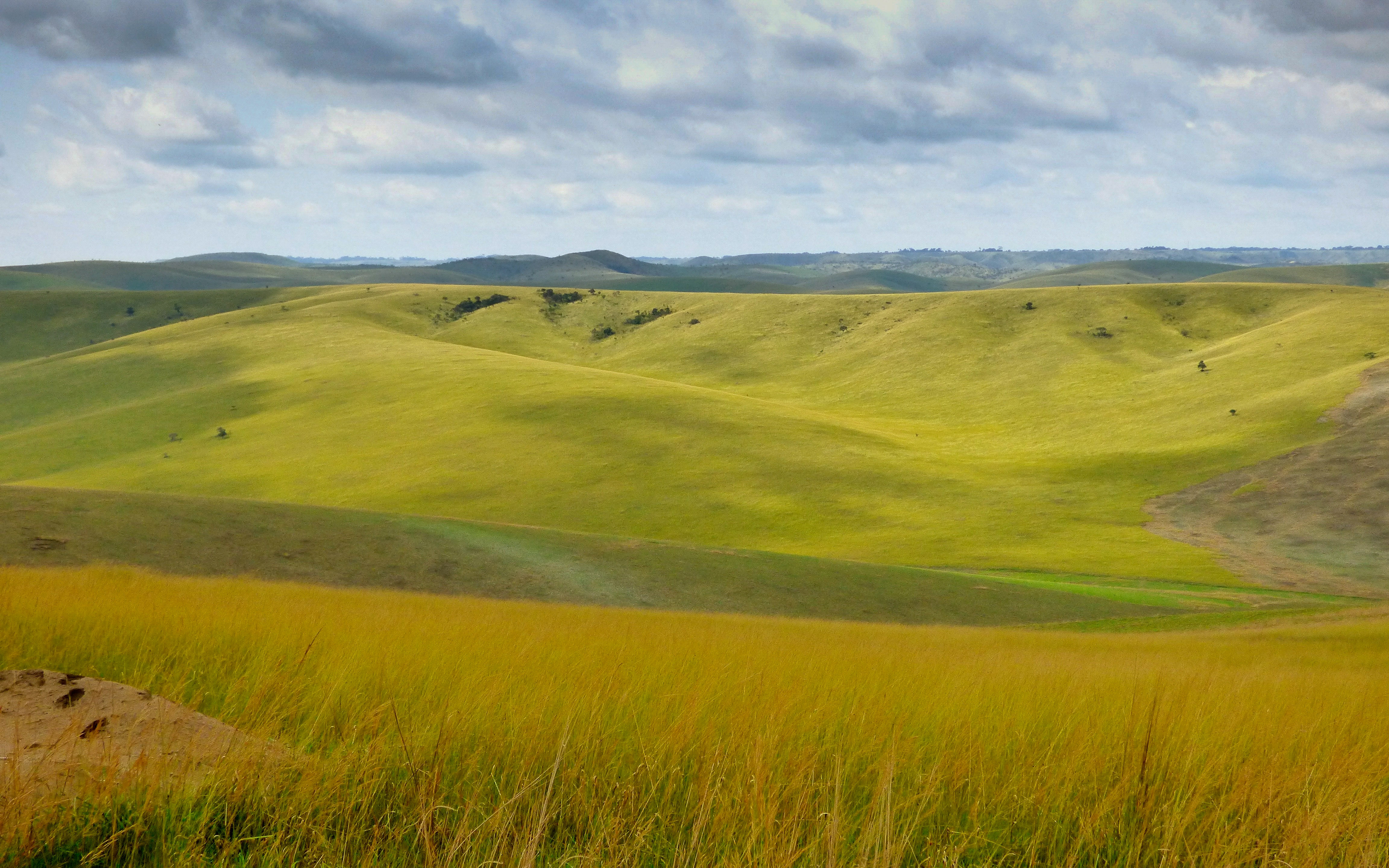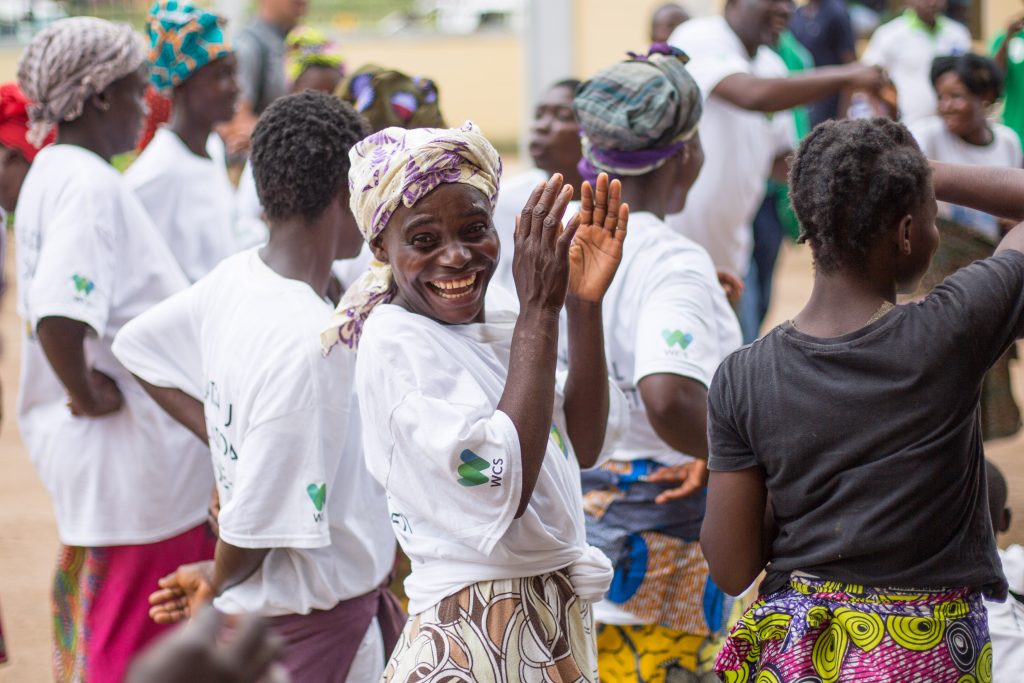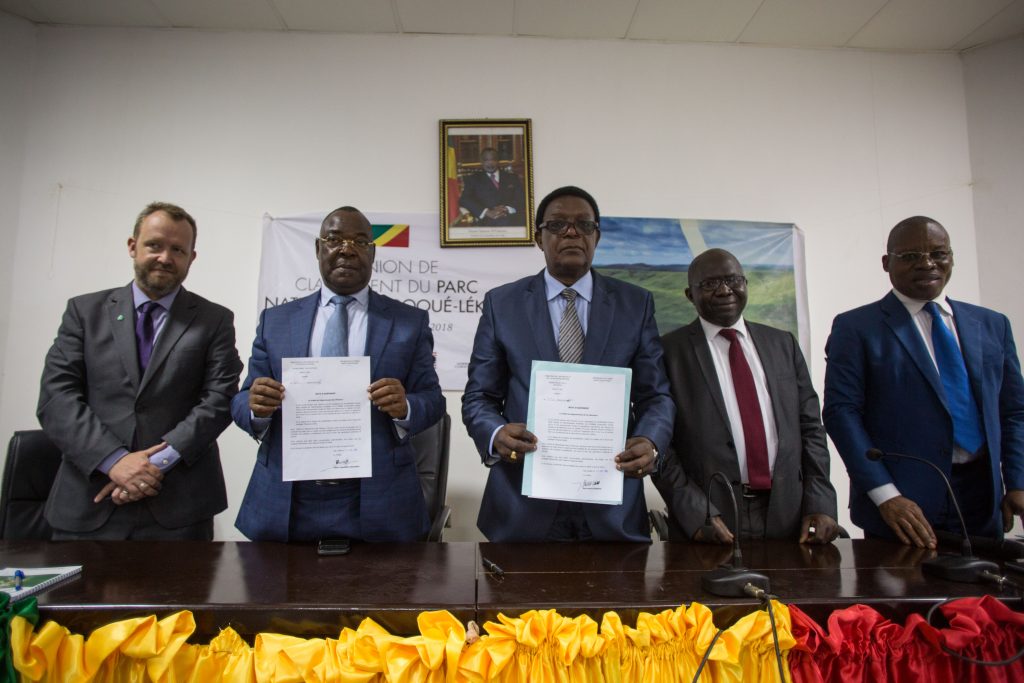
Congo’s fifth national park: Ogooue-Leketi
SIBITI, Republic of Congo (9 November 2018)– On the 9thof November 2018 Her Excellency Rosalie Matondo, the Republic of Congo’s Minister of Forestry Economy; the US Ambassador, Todd Haskell; Paul Sabatine, Mission Director to USAID/DRC; the Director of the Wildlife Conservation Society’s Congo program; and local authorities gathered in Sibiti in the Lekoumou Department to create, by official decree, Congo’s fifth national park – the Ogooué-Leketi National Park.
A new protected area has been created in the Republic of Congo – the Ogooué-Leketi National Park (350,000 ha). Borderingthe Plateaux Batéké National Park in neighbouring Gabonit formsa transboundaryprotected area of over half a million hectares. It is part of the most southerly IUCN-designated ExceptionalPriority Site for the protection of western lowland gorillas and central chimpanzees, and is of considerable ecological significance due to its location in the forest-savannah transition zone. It contains the headwaters of both the Ogooué river (which is the main river of Gabon) and the Leketi river, which feeds the Alima and eventually the Congo river. Since 2004, theWildlife Conservation Society (WCS) and the Ministry of Forestry Economy have carried out detailed biological and socio-economic surveys in and around the proposed Ogooué-Leketi National Park (OLNP) to evaluate the conservation potential of this area, and to define the appropriate boundaries and benefits of the new protected area. Following the closure of the three logging concessions that overlapped the proposed protected area, Ogooué-Leketihas officially been declared Congo’s fifth National Park.

This new National Park lies in a unique landscape for Congo, dominated by vast rolling savannahs in the east, with green ribbons of gallery forest linking up to a larger rainforest block to the north and west. Within this forest is a constellation of swampy, mineral-rich forest clearings (bais) that offer unique opportunities to view forest wildlife. OLNP is home to a fascinating biodiversity found nowhere else in Congo. At least six of the savannah plant species are very rare and specialists of the Kalahari Sands that form the substrate of the Bateke Plateau. Savannah specialists include Grimm’s (or bush) duiker , side-striped jackal, three species of bustard, Congo Moorchat (Traquet-fourmilier du Congo), Brazza’s Martin (Hirondelle de Brazza), and a probable new species of cisticola. These animals and birds, live in the same Park as true forest species – gorillas, forest elephants, forest buffalo, red river hog, several species of forest duiker, and several species of monkeyincluding the mandrill. In 2015, cameras placed in the neighbouring Bateke Plateau National Park in Gabon started to capture images of a young male lion, a species that was thought to have been locally extinct since the 1990s.

The communities living near the Ogooué-Leketi National Park have been involvedin the process of creating the protected area since the project was launched, through an approach that ensured best practicesof Free, Prior, and Informed Consent. Thelocal communities and authorities from all villages bordering the Park in the districts of Zanaga and Bambama in the Lekoumou Provinve, and Lekana in the Plateaux Province, have expressed strong support for creating the Park from the outset. Planning was carried out together with the local communities using participatory social mapping – local communities conducted the mapping themselves. These maps were used to define and agree upon limits of an eco-development area as part of the Park and to agree on management rules for this area. The next steps will include drawing up a management plan that incorporates these local use areas and rules, and finalising conservation zoning that will protect OLNP’s great biodiversity.
WCS, with support from USAID’s Central Africa Regional Program for the Environment (CARPE) and the US Fish and Wildlife Service, led the biodiversity surveys, facilitated socio-economic surveys and supported the participatory social mapping process and sustainable natural resource management in the villages bordering the boundaries of the Park, the latter through a partnership with the NGO Initiative Développement and the support of the local company MPD Congo. This will secure a strong basis for the protection of the park’s biodiversity and traditional rights of local communities.
USAID’s Central Africa Regional Program for the Environment (CARPE), the U.S. Fish and Wildlife Service, and the Norwegian Ministry of Climate and Environment supported the creation process of the Ogooue-Leketi National Park.


Tim Rayden
Yessssss!